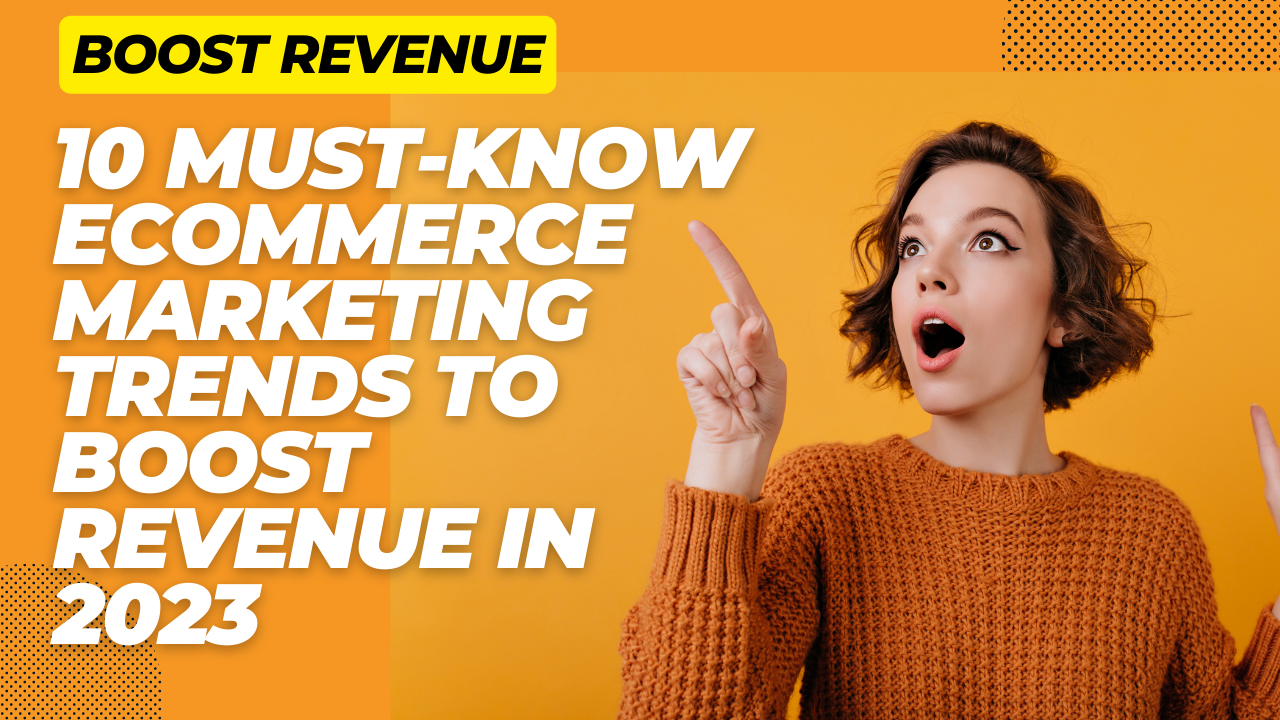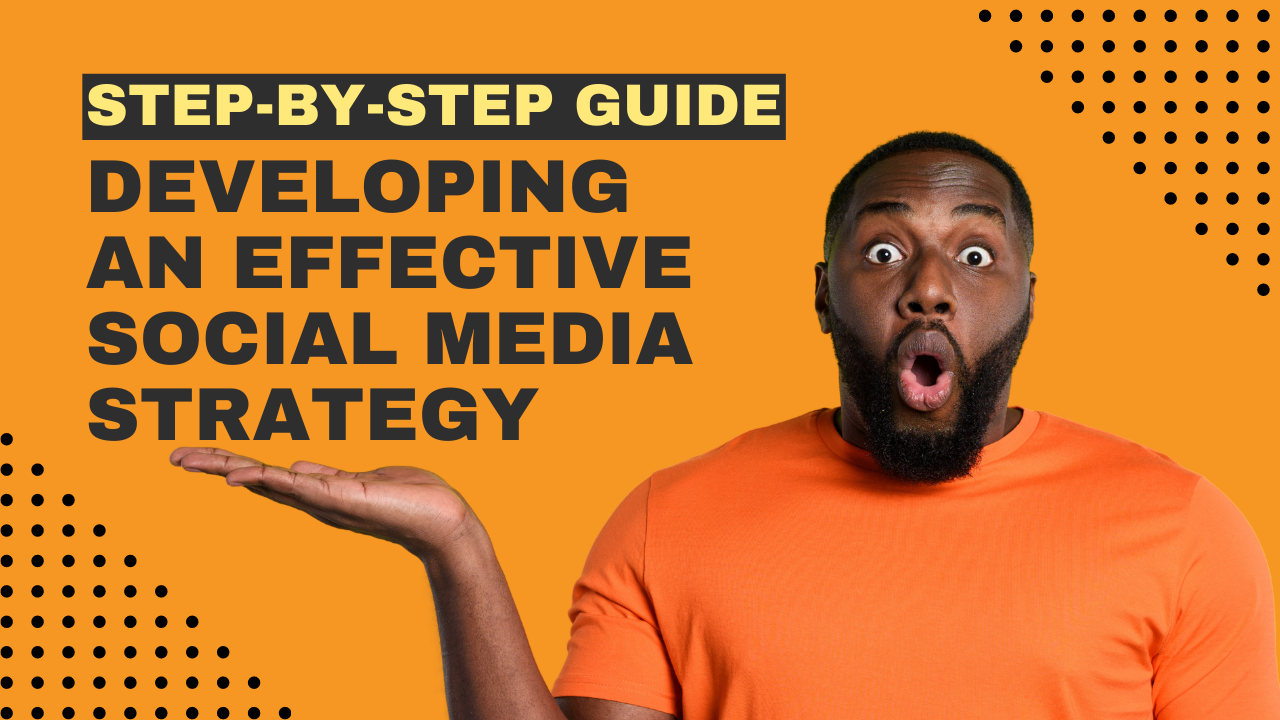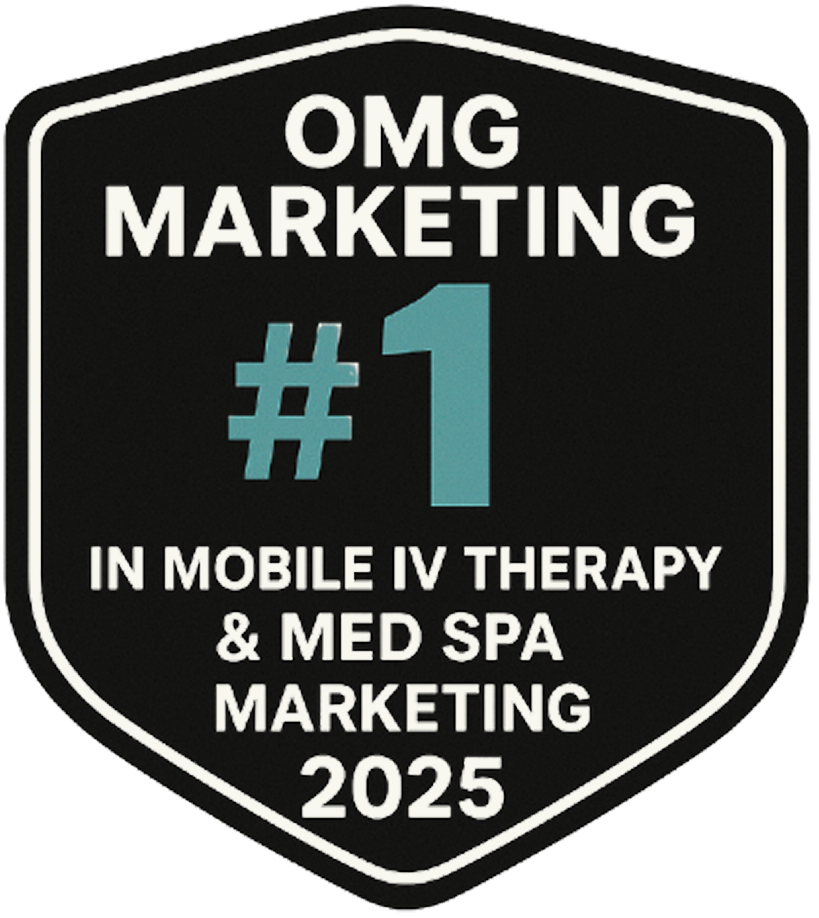10 Must-Know Ecommerce Marketing Trends to Boost Revenue in 2023

The world of ecommerce is constantly evolving, and as a business owner, it's essential to stay ahead of the game to remain competitive. To help you navigate the ever-changing landscape of ecommerce marketing, we've compiled a list of ten must-know trends to boost your revenue in 2023.
The Latest Ecommerce Platforms You Need to Know About
Choosing the right ecommerce platform is crucial for the success of your online store. With the rise of online shopping, it's more important than ever to have a reliable and effective platform to showcase your products and services. There are countless options to choose from, each with its own unique features and capabilities.
One of the latest ecommerce platforms making waves in the industry is BigCommerce. This platform offers a wide range of features, including multi-channel selling, customizable themes, and built-in SEO tools. It also has a user-friendly interface, making it easy for even novice users to set up and manage their online store.
Which Ecommerce Platform is Right for Your Business?
When it comes to choosing an ecommerce platform, there are several factors to consider. Pricing is a major consideration for most businesses, as the cost of the platform can impact overall profitability. Some platforms, like Shopify, offer tiered pricing plans to accommodate businesses of all sizes and budgets.
Another factor to consider is ease of use. Platforms like WooCommerce and Magento offer a high level of customization and flexibility, but may require more technical expertise to set up and manage. On the other hand, platforms like Wix and Squarespace offer a more streamlined and user-friendly experience, but may have limitations in terms of customization options.
It's also important to consider the specific needs of your business. If you plan to sell products across multiple channels, a platform like BigCommerce or Shopify may be the best choice. If you have a large inventory and require advanced inventory management features, a platform like Magento may be more suitable.
Ultimately, the best ecommerce platform for your business will depend on a variety of factors. Consult our guide to help you determine which platform is best suited for your business needs and goals.
Boost Your Online Visibility with SEO Strategies
Search engine optimization (SEO) is an essential aspect of digital marketing. It is the process of optimizing your website to increase its visibility and ranking on search engine results pages (SERPs). SEO helps you drive organic traffic to your website, which can lead to more leads, conversions, and revenue.
In this section, we'll explore the best SEO practices for ecommerce websites. We'll discuss how you can optimize your website to rank higher on SERPs and attract more potential customers.
SEO Best Practices for Ecommerce Websites
Optimizing your ecommerce website for SEO involves a range of tactics. Here are some of the most effective strategies for on-page and off-page SEO:
Keyword Research
Keyword research is the foundation of SEO. It involves identifying the keywords and phrases that your target audience is searching for and incorporating them into your website content. By using the right keywords, you can improve your website's relevance and authority, which can help you rank higher on SERPs.
When conducting keyword research, it's important to consider the search volume, competition, and relevance of each keyword. You can use tools like Google Keyword Planner, SEMrush, and Ahrefs to find the best keywords for your website.
Content Creation
Creating high-quality, relevant, and engaging content is another critical aspect of SEO. Your website content should provide value to your target audience and address their pain points and needs. By creating valuable content, you can attract more organic traffic to your website and establish your brand as an authority in your industry.
When creating content, it's essential to use the right keywords and optimize your content for search engines. You should also focus on creating content that is shareable and linkable, as this can help you attract more backlinks and improve your website's authority.
Technical Optimization
Technical optimization involves optimizing your website's structure, speed, and functionality to improve its performance and user experience. This includes optimizing your website's metadata, URL structure, sitemap, and robots.txt file.
You should also ensure that your website is mobile-friendly and has a fast loading speed. Mobile optimization is critical, as more and more people are using mobile devices to browse the internet. A slow loading speed can also hurt your website's ranking on SERPs, as it can lead to a higher bounce rate and lower user engagement.
Off-Page Optimization
Off-page optimization involves building backlinks and social signals to improve your website's authority and relevance. Backlinks are links from other websites that point to your website. They are a critical ranking factor for search engines, as they indicate that other websites consider your content valuable and relevant.
You can build backlinks by creating valuable content, reaching out to other websites in your industry, and guest blogging on relevant websites. You should also focus on building social signals, such as likes, shares, and comments, as these can also help improve your website's authority and relevance.
By implementing these SEO best practices, you can improve your ecommerce website's visibility and attract more potential customers. Remember to stay up-to-date with the latest SEO trends and algorithm updates to ensure that your website stays competitive in the ever-changing digital landscape.
Increase Your Sales with Conversion Rate Optimization
Conversion rate optimization (CRO) is the practice of improving website elements to increase the percentage of visitors who complete a desired action, such as making a purchase. In today's competitive e-commerce landscape, it's more important than ever to ensure that your website is optimized for conversions. In this section, we'll share some key CRO techniques that can help you maximize your revenue.
CRO Techniques That Will Skyrocket Your Sales
From optimizing your website's layout to A/B testing your product pages, there are several ways to boost your conversion rates. Let's take a deeper look at some of the most effective CRO strategies:
1. Improve Your Website's User Experience
One of the most important factors in improving your conversion rate is creating a positive user experience on your website. This means ensuring that your website is easy to navigate, loads quickly, and is visually appealing. Make sure your website is mobile-friendly, as more and more users are accessing websites on their mobile devices.
Another way to improve user experience is by providing clear and concise product descriptions, high-quality images, and customer reviews. This will help potential customers make informed decisions and feel confident in their purchase.
2. Implement A/B Testing
A/B testing is a powerful technique that involves creating two versions of a webpage and testing them against each other to see which one performs better. This can be used to test different headlines, images, calls to action, and more. By testing different elements, you can identify what works best for your audience and make data-driven decisions to improve your conversion rate.
3. Optimize Your Checkout Process
The checkout process is a critical step in the conversion process, and any friction or confusion can lead to cart abandonment. To optimize your checkout process, make sure it's easy to use and navigate. Offer multiple payment options, including popular ones like PayPal and Apple Pay. Ensure that your checkout page is secure and that customers feel safe entering their payment information.
4. Use Social Proof
Social proof is a powerful tool that can help build trust with potential customers. This includes customer reviews, testimonials, and social media mentions. By showcasing positive feedback from satisfied customers, you can help persuade potential customers to make a purchase.
By implementing these CRO strategies, you can improve your website's conversion rate and increase your sales. Remember, CRO is an ongoing process, and it's important to continually test and optimize your website to ensure that you're maximizing your revenue.
The Importance of Mobile Optimization in Ecommerce
With the rapid increase in the use of mobile devices, it has become critical for ecommerce businesses to have a mobile-friendly website. As more and more consumers are using their smartphones and tablets to shop online, having a website that is optimized for mobile devices can make all the difference in the success of your business.
Mobile optimization is not just about making sure your website looks good on a small screen. It's about creating a seamless and user-friendly experience for your customers, regardless of the device they are using. A mobile-friendly website can help your business in several ways:
- Improved User Experience: A website that is optimized for mobile devices is easier to navigate, with larger buttons and text that is easy to read. This can lead to a better user experience, which can result in increased engagement and sales.
- Higher Search Engine Rankings: Google and other search engines prioritize websites that are mobile-friendly in their search results. This means that having a mobile-friendly website can improve your search engine rankings and make it easier for potential customers to find you online.
- Increased Conversions: A mobile-friendly website can lead to higher conversion rates, as customers are more likely to make a purchase if the process is easy and seamless. A website that is not optimized for mobile devices can lead to frustration and abandoned shopping carts.
Mobile-Friendly Ecommerce Websites: Why They Matter
According to recent statistics, mobile devices now account for more than half of all internet traffic. In fact, mobile commerce is projected to reach $3.56 trillion by 2021. With so many consumers using their mobile devices to shop online, having a mobile-friendly ecommerce website is more important than ever.
But it's not just about the numbers. A mobile-friendly website can help you create a better connection with your customers. By providing a seamless and user-friendly experience, you can build trust and loyalty with your audience.
So how can you ensure that your ecommerce website is mobile-friendly? Here are some tips:
- Use Responsive Design: Responsive design ensures that your website looks good on any device, whether it's a smartphone, tablet, or desktop computer. This means that your website will automatically adjust to the screen size of the device, providing a seamless and consistent experience for your customers.
- Optimize for Speed: Mobile users expect fast load times, so it's important to optimize your website for speed. This can include reducing image sizes, minimizing the use of plugins, and using a content delivery network (CDN) to serve your website from a server closest to the user.
- Simplify Your Checkout Process: A complicated checkout process can lead to abandoned shopping carts. Make sure your checkout process is easy to navigate and requires as few steps as possible. Consider offering guest checkout and allowing customers to save their payment information for future purchases.
By implementing these tips, you can ensure that your ecommerce website is optimized for mobile devices, providing a better experience for your customers and driving more sales for your business.
Creating a Seamless Shopping Experience with Omnichannel Marketing
Omnichannel marketing refers to the practice of using multiple channels, such as email, social media, and physical stores, to create a cohesive shopping experience for your customers. By offering multiple channels for your customers to interact with your brand, you can provide a seamless shopping experience that meets their needs and preferences. This can lead to increased customer loyalty and higher sales.
How to Implement an Effective Omnichannel Marketing Strategy
Implementing an effective omnichannel marketing strategy requires a deep understanding of your customers and their shopping habits. One of the key benefits of omnichannel marketing is the ability to track customer interactions across multiple channels, allowing you to gain valuable insights into their behavior and preferences.
To get started with omnichannel marketing, it's important to first identify the channels that your customers use most frequently. This could include social media platforms like Facebook and Instagram, email marketing campaigns, and even physical stores. Once you have a clear understanding of your customers' preferred channels, you can begin to develop a strategy that leverages these channels to create a cohesive shopping experience.
One effective way to implement an omnichannel marketing strategy is through the use of retargeting ads. Retargeting ads allow you to target customers who have already interacted with your brand, such as by visiting your website or adding items to their cart. By showing these customers relevant ads across multiple channels, you can increase the likelihood that they will make a purchase.
Another important aspect of omnichannel marketing is the use of customer data. By collecting data on your customers' behavior and preferences, you can tailor your marketing efforts to better meet their needs. This could include sending personalized emails, offering targeted promotions, or even creating custom landing pages for different customer segments.
In conclusion, implementing an effective omnichannel marketing strategy can help you create a seamless shopping experience for your customers. By leveraging multiple channels and using customer data to tailor your marketing efforts, you can increase customer loyalty and drive sales for your business.
The Power of Marketplaces: How to Leverage Them for Your Business
Marketplaces such as Amazon, eBay, and Etsy offer a unique opportunity for ecommerce businesses to reach a wider audience and drive more sales. These marketplaces are a popular choice for both established businesses and startups, as they provide a platform for businesses to showcase their products and services to millions of potential customers.
One of the biggest advantages of selling on marketplaces is the exposure that your business can gain. With millions of users visiting these platforms each day, your products can be seen by a much larger audience than you could reach on your own. Additionally, marketplaces often have established trust with their customers, which can help boost your credibility and sales.
Another advantage of selling on marketplaces is the ease of use. Most marketplaces provide a user-friendly interface that allows businesses to easily upload their products, set prices, and manage orders. This can save businesses time and money on developing their own ecommerce website.
However, there are also potential downsides to selling on marketplaces. One of the biggest concerns is the fees associated with using these platforms. Marketplaces often charge a commission on each sale, which can eat into your profits. Additionally, businesses may face increased competition on these platforms, which can make it harder to stand out from the crowd.
The Pros and Cons of Selling on Ecommerce Marketplaces
There are several major ecommerce marketplaces to choose from, each with their own unique features and fees. Amazon is one of the largest marketplaces, with over 300 million active users and a wide range of product categories. However, Amazon charges a referral fee on each sale, which can range from 6% to 45% depending on the product category.
eBay is another popular marketplace, with over 185 million active buyers and a focus on auctions and bidding. eBay charges a final value fee on each sale, which ranges from 2.35% to 12% depending on the product category.
Etsy is a popular marketplace for handmade and vintage items, with over 60 million active buyers. Etsy charges a listing fee of $0.20 per item and a transaction fee of 5% on each sale.
While selling on marketplaces can provide many benefits, it's important to weigh the pros and cons before making a decision. Businesses should consider their target audience, product category, and profit margins when deciding whether to sell on a marketplace.
To mitigate the risks of selling on marketplaces, businesses can focus on building their own brand and customer base. This can include developing a strong social media presence, offering unique products or services, and providing excellent customer service to build customer loyalty.
Shoppable Posts: The Future of Social Media Marketing
Social media platforms such as Instagram and Facebook are increasingly becoming popular channels for ecommerce sales. In this section, we'll dive into the trend of shoppable posts and how they can help you drive more revenue.
With the rise of social media, businesses have been given a unique opportunity to connect with their customers in a more personal and authentic way. Shoppable posts take this a step further by allowing businesses to sell their products directly through their social media channels. This means that customers can purchase products without ever having to leave the app, making the buying process seamless and convenient.
How to Create Shoppable Posts That Drive Sales
Now that we've established the importance of shoppable posts, let's dive into how you can create them. The first step is to set up a business account on the social media platform of your choice. From there, you can link your ecommerce website to your social media account and start tagging your products in your posts.
When it comes to creating visually appealing product imagery, it's important to showcase your products in a way that is both eye-catching and informative. This means using high-quality images that showcase your products from multiple angles, as well as including detailed product descriptions that highlight the key features and benefits.
But it's not just about the visuals - the captions you use in your shoppable posts can also make a big difference in driving sales. Use language that speaks directly to your target audience and highlights how your products can solve their problems or meet their needs. And don't forget to include a clear call-to-action, such as "Shop now" or "Buy today."
By following these tips and creating shoppable posts that are both visually appealing and informative, you can drive more sales and grow your ecommerce business through social media.
Personalization: The Key to Building Customer Loyalty
Gone are the days of one-size-fits-all marketing. Personalization is becoming increasingly important in the world of ecommerce, as consumers expect a tailored shopping experience. In fact, studies have shown that 80% of consumers are more likely to make a purchase from a company that offers a personalized experience.
Personalization can take many forms, from product recommendations to personalized emails. One effective way to personalize the shopping experience is through the use of customer data. By analyzing customer data, you can gain insights into their preferences, behavior, and purchase history. This information can then be used to create targeted marketing campaigns that are more likely to resonate with the customer.
Another way to personalize the shopping experience is through the use of personalized product recommendations. By analyzing a customer's browsing and purchase history, you can recommend products that are relevant to their interests and needs. This not only improves the customer's shopping experience but can also increase sales and customer loyalty.
How to Personalize Your Ecommerce Marketing Strategy
So, how can you implement personalization into your ecommerce marketing strategy? Here are a few practical tips:</p>
- Collect customer data: Use tools like surveys, website analytics, and customer feedback to collect data on your customers.
- Analyze customer data: Use data analysis tools to gain insights into customer behavior, preferences, and purchase history.
- Create targeted marketing campaigns: Use customer data to create targeted marketing campaigns that are more likely to resonate with the customer.
- Offer personalized product recommendations: Use customer data to offer personalized product recommendations that are relevant to the customer's interests and needs.
- Send personalized emails: Use customer data to send personalized emails that are tailored to the customer's preferences and behavior.
By implementing these strategies, you can create a personalized shopping experience that will not only improve customer satisfaction but also increase sales and customer loyalty.
Examples of Ecommerce Brands Winning at Personalization
There are many ecommerce brands that are winning at personalization. Here are a few examples:
- Amazon: Amazon is known for its personalized product recommendations, which are based on a customer's browsing and purchase history.
- Netflix: Netflix uses customer data to offer personalized movie and TV show recommendations.
- Spotify: Spotify uses customer data to create personalized playlists and recommend new music.
These brands have successfully implemented personalization into their marketing strategies, resulting in increased customer loyalty and sales.
Conclusion
In the rapidly evolving world of ecommerce, it's essential to stay up-to-date with the latest marketing trends to drive revenue and remain competitive. From mobile optimization to personalized marketing, there are several tactics you can implement to enhance your online presence and boost your sales. By staying ahead of the curve and adapting to changing consumer preferences, you can position your ecommerce business for success in 2023 and beyond.
Testimonials.
"Joseph helped me grow my Twitter/Instagram base for my photo company. He was also able to teach me a few things of controlling our own SEO and showing us a few tips on social media. Would recommend to anyone trying to grow their business."
— David Perez
"Joseph has helped me and my social media and streaming so much. He really helped me in stepping up my online presence. I don't know where I'd be without him and his team. The best part is they are friendly but know when to push you to go further."
— Derrick Tran
"We just hired this company to brand our newly created cleaning service, and already they have showed how professional they are. I'm so excited to have them behind us. I recommend them to help you grow or rebrand your business."
— Roberta Sebastian
OUR PARTNERS

Request A Quote
Need a quote on a re-design or a new project? Give us a bit of detail on your project and let us help!














